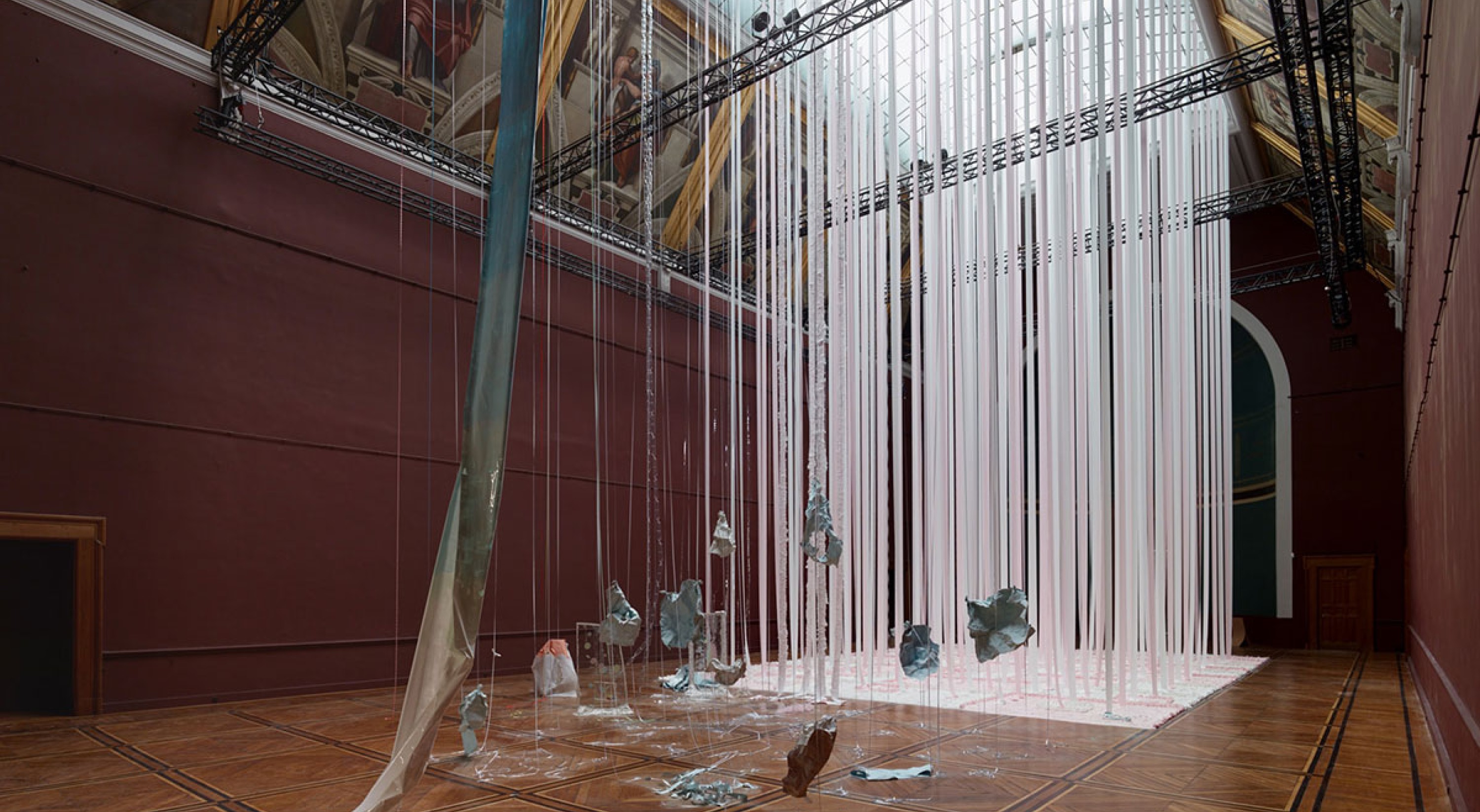Karla Black
octoberoct 20 - november – nov 20
octoberoct 20 - january – jan 20
A Festival d’Automne à Paris production // In collaboration with Beaux-Arts de Paris and Musée des Archives nationales // With support from the following galleries: Gisela Capitain (Cologne) and David Zwirner (New York) // With support from Lafayette Anticipation and Fluxus Art projects // With support from Sylvie Winckler
After Venice, London, Los Angeles and New York, the delicate sculptures of the Scottish artist Karla Black are presented for the first time in France in two Parisian venues dedicated to art and its history: the Musée des Archives nationales and the Beaux-Arts de Paris.
Karla Black uses materials found in everyday life such as toilet paper, cotton wool, soap, cellophane, and cosmetics as well as those from the art world, such as plaster and colour pigments. Despite the clear references to painting and sculpture, her works go beyond the constraints of framing and the qualities of the material itself. They are also freed from the logic of wall hanging, a custom which had already been brought into question by the advent of modernism and numerous artistic practices of the 1970’s. The wide pictorial framework of her works brings us back to abstract expressionism and American colour field painting.
Her work enquires into the subtleties of light, colour, fluidity, and evanescence of different shapes.
Some of her pieces are tied up with the physical gesture itself, and border on performance. Spectators immerse themselves in these installations, and in the absence of any form of narrative, representation or metaphor, are able to experience them both physically and visually. Most of her works are constructed on-site, and this manifests itself in the finished product. Either suspended from the ceiling or carefully placed on the floor, her delicate works have an immaterial quality about them. The pale colours, going from pistachio green to layette pink, become a haven of light and pictorial vibrance.
Her artistic proposition at the Beaux-Arts de Paris echoes the collection of plaster casts on display in the building’s chapel, whilst that of the Musée des Archives nationales is a response to the decorative dimension of the rococo salons of the Hôtel de Soubise.



